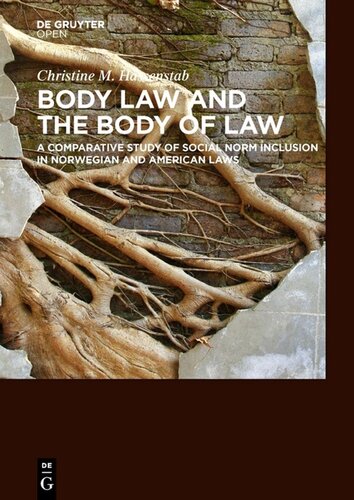

Most ebook files are in PDF format, so you can easily read them using various software such as Foxit Reader or directly on the Google Chrome browser.
Some ebook files are released by publishers in other formats such as .awz, .mobi, .epub, .fb2, etc. You may need to install specific software to read these formats on mobile/PC, such as Calibre.
Please read the tutorial at this link: https://ebookbell.com/faq
We offer FREE conversion to the popular formats you request; however, this may take some time. Therefore, right after payment, please email us, and we will try to provide the service as quickly as possible.
For some exceptional file formats or broken links (if any), please refrain from opening any disputes. Instead, email us first, and we will try to assist within a maximum of 6 hours.
EbookBell Team

5.0
38 reviewsFor some legal philosophers, if a law is procedurally correct, enacted in ways constitutionally recognised and agreed upon, then the content is of no significance. It is a “good” law, no matter what it does or justifies. The question of one's consent or opposition to any particular law is extraneous to the legality and is regarded merely as a political matter. The assumption is that a certain procedure and logic in law creation has taken place, and the law can be altered by a change in political leaders in a subsequent political election. However, this view and assumption obscure an uncomfortable fact. Some laws can be “bad” or “immoral.” Critical legal theory suggests that there are often two (or more) sets of laws, and it makes no difference if Lady Justice is blindfolded or not.
Laws change in the process of history, in part, because societal norms change. As common understandings of morality evolve, law adapts itself to the new moral environment. Norms can change slowly or rapidly, even within a lifetime. This book examines both social and legal norms and theories of how they are both created.
Christine M. Hassenstab investigates how laws on sterilization, birth control and abortion were created, by focusing on the act of legislation; how the law was driven by scientific and social norms during the first and closing decades of the 20th century in the USA (especially in the state of Indiana) and Norway.
The primary focus of Body Law and the Body of Law is the sociology of law and how and why the law changes. The author develops the notion “body law” for reproductive policies and uses sociological theories to untie the various strands of social history and legal history and looks at two cases of legislation.
The book is divided in to two main sections. The first examines eugenic laws in the USA state of Indiana and Norway during the first decades of 20th century. The second part is about the birth control and abortion debate in both countries throughout the late 1960s and 1970s.
Christine M. Hassenstab is a lawyer and sociologist. She served as a criminal defense attorney for 15 years (1987—2001) in Seattle, Washington. Currently, she is an adviser in the EU Grants Office at the Norwegian University of Science and Technology in Trondheim, Norway.
Eugenic laws in the USA state of Indiana and Norway, Birth control and abortion debate, Social and cultural norms